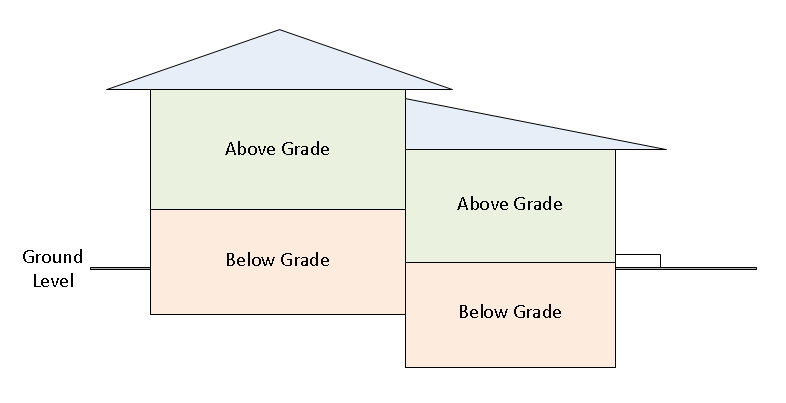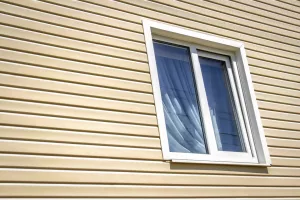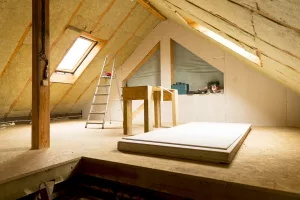What Does Below Grade Mean?
Below grade in real estate is a term that describes a space that is below ground level. This is usually referred to as a basement.
Real Estate Agent Explains Below Grade
Below grade areas are usually referred to as basements, but the definition is more specific than that. That is, the floor itself is below ground level. It doesn’t matter how much of the space is above ground, though. You could have a basement floor that is only one foot under the ground and it would still be a below grade floor.

Some buildings, such as split-level houses, may have more than one floor below grade. Here is an example:

Here you can see that there is more than one floor below grade. This 4-level split technically has two basement levels.
Why Does It Matter?
Below grade status is important for the same reason above grade status is – that square footage isn’t counted on real estate listings. You want to know where everything is in relation to the ground. A basement is not the same as an upper floor and so, at least on paper, labeling things below grade gives some more detail about the home’s layout. Having three bedrooms above grade and one below is much different than having them all on an upper floor.


Hi. I just wanted to know what happens if the property is on a hill. For example, what if a room would be below grade on one side, but on the other side it opens up to a patio that is ground level.
What if the same floor on the same side is at or above grade in one room and below grade in another, both on the same side? (I may be imagining this. But it seemed to be the case.) (Is AT ground level considered above grade?)
Thanks if you answer: it’s the first time I heard this term and I Googled it. Thanks for reading.
Hi Lisa,
It doesn’t matter if the ground slopes or not if the entire floor is below grade. But if there is a walk-out basement, the entire floor could be counted as above grade space. (at least in our jurisdiction). AT grade is considered above grade. And if it isn’t a walkout, I would count what is above grade as above and what is below as below in that area. So maybe half of the house’s basement area is above grade – that would be counted as above. The rest would be counted as below.
What if the grade is sloping? so on the same drawing above with the same layout but the grade is sloping downwards left to right? will the lower levels still be considered below grade?
Hi xrb,
Anything below the level of the soil would still be below grade. If part of the floor is above, then it could be counted. But a hill in itself, doesn’t really change anything. It’s where the floor lines up. Is it below or above? That’s all that really matters.
Hi Alan, thanks for the response. Here’s the side photo of the property. I hope this helps out with my question. Is the first level really below grade? As you can see it’s either, grade is sloping front to back or you have 2 ground levels? One side of the first level is below grade, the sides are partially below grade but the back has a walkout to a backyard. Also, garage is on the opposite side with a side access road sloping down. We’re looking at this property for purchase but wanted to make sure all the GLA will be counted. There are other 3 properties already built with similar configuration but zillow.com does not show sq footage or inconsistent descriptions (ie. one was studio, one was 3bd 3 bath with additional BRs??) Thanks in advance!
https://scontent-b.xx.fbcdn.net/hphotos-xfp1/t31.0-8/10668743_10202991826415858_1534806178385453042_o.jpg
Hi xrb,
I see better here what you mean. Those areas that have the floor above grade should be countable. Some jurisdictions might count the entire floor as above grade if it is a walkout basement at all – but not all people will agree that this is fair. From the photo, it looks like more than half of the basement can safely be counted as above grade square footage. I hope that helps!
Hi,
So with this in mind, if I see a property listing that states 4+3 bedrooms for example, does that mean in total it has 7 bedrooms and that 3 of them are just in the basement?
Hi Matt,
Yes, that is the conventional way of writing that 3 of the 7 total bedrooms are just in the basement. Bear in mind though, that the 4 ‘upstairs’ bedrooms could be on the main floor or second storey (if it is a 2-storey house) and in any combination – they are just labelled as above grade, but their specific location is not mentioned.
Alan- I live in Columbia, Maryland- USA in a split level home and recently my entire lower level was not counted in the Homes square footage because the front of my house sits three feet below ground while the side and back are at ground level, with a walk out in the rear.
I understand the below grade thinking, but what if I was to hire an excavator to dig out a three foot deep, three foot wide “trench” across the front of my home, causing the lower front on my house to be exposed and therefore “at ground level”. Would the 1200 sq ft of lower level then count as “living space” ? That would double my living space and generously increase my appraisal and may be worth the expense of the work.
Hi Ron,
Thanks for the comment! This action may qualify you for a higher stated above ground living space, yes. However, your home will not change, so it will not likely be worth any more when selling – it will just be an outlier in the split level category. If people are solely buying based on square footage, that may work, but they will likely compare (in real life) your house to others that they see that are like it and feel the space is no larger – which is true. So I am not sure it would be worth the expense. In a vacuum it may work, but with comparisons all over, I don’t think it would. The designation is really meant so that you can compare houses on paper between styles before you go see them, but not really to make houses worth more. Once they see what has been done, they’ll know it is much like the split level down the street but effectively higher up. The other issue it may cause is water infiltration. Depending on how low you’ll be compared to the neighbour’s you may get water in the basement more readily because everything may be flowing downhill toward your foundation.
Ground level, or on grade can be explained in a very simple way. Your entry door is considered on grade. Anything above is considered above. Anything below is considered below. Pretty simple.
Hi Craig,
That is not quite true. If your entry door is above ground level, that level is not grade. The ground dictates where grade is. Some entry doors are below grade, and some are above grade. The term grade can also be found regarding grading certificates, where a builder must grade the earth around a home. The level of the dirt is ‘grade’.
We are trying to sell our split level house. The appraisal came in but did not include the square footage of the house in the downstairs Each room including the bathroom and laundry room have full size windows that and you have to look down to see the ground. The foundation floor is concrete but the foundation walls are not. So how can this be considered below grade?
Hi Cory, It doesn’t matter where your windows are. It is below grade if the floor is below the ground, even if it is a ‘high basement’. Foundation walls do not dictate what is considered below grade, either. Just the level of the floor makes the rule. If you were to step into the basement from ground level and you would step down, then it is below grade.
Alan,
First, let me say your answers here have been very helpful. I have a slight variation which I am starting to think qualifies my downstairs floor to be at or above grade. Here is the situation:
This house is built on a hill, with one wall dug in and outside retaining walls extending away from the house. The end result, to talk about the walls, is that one wall is certainly below grade, but all other 3 walls are at or above grade, with each having an exit door that is at or above grade. It would seem that the entire floor is thus at or above grade. Is that true?
My interest does not actually effect definitions for marketing as there are no bedrooms on the lower level, but instead a den/living room, a dining area, the kitchen. Instead, the issue is installing flooring and having increased options if this counts as on or above grade for warranty etc. There seems to be no issue with moisture as despite this out being 50 years old, there is zero evidence (after a careful comprehensive home inspection) of any moisture seep at all which is not surprising as the earth here is very well drained course granite with no natural water flow to this lot due to the area topography…but all that is beyond your role of helping with the simple definition of at or below grade on a hill with retaining walls outside.
thanks
Hi Galen,
Great question. In Edmonton specifically, if any of the floor-space is below grade, the entire area is below grade. This counts if just one wall is below grade as well. So in my particular jurisdiction, even a walk-out basement is considered below grade. But this is a definition for the real estate board. If you need a warranty definition, I’m afraid you’ve come to the wrong place. I see that you are located in Oregon, so you may have different rules for counting space where you are. Best to check the definition with the person supplying the warranty to be sure. When it comes to warranties, they’re not in the business of covering mis-use. But in this case, if you are confident that no water will affect the floor, why the concern? -Alan
Hi Alan – great site – interesting comments – its said split levels with rear walk-out with three external sides at grade, is considered above grade, even though the inner 4th wall is lower than the front the house – from this it seems the hillside 2-storey homes with main walkout at grade on three sides should count the main even if below grade a couple of feet on the front side
Hi Jeff. If any part of the floor is below grade, the level is below grade. The line has to be drawn somewhere, otherwise there could be no convention. You could argue 1 wall, 2 walls, 3 walls could be below grade. You could excavate and change the designation. It may be different other areas, but there isn’t a more reasonable way to count below grade levels than the way it’s done where we are. The bottom line is the house is what it is. What it says on paper is not the be-all end-all. A buyer is going to visit the home before they purchase it. For the public’s sake, we need concrete definitions of these terms. Bending the rules isn’t helpful.
Why is it that when I purchased my home it was sold to me as 3 bedroom 2 bathroom….and the county assessor has my home listed as 3 bedroom 2 bathroom….but I can’t refinance because the appraiser says my home is only 2 bedroom 1 bathroom because it’s a split level and 1 bedroom and 1 bathroom are on the lower level?
It’s a little shady that I have to pay property taxes on 3 bedrooms and 2 bathrooms but I can’t refinance because I’m told I only have 2 bedrooms and 1 bath.
How is this even fair to count these spaces when I’m getting taxed and then turn around and tell me they don’t count when establishing market value?
Hi Kristen, This is a great question. I have not heard of this before. It is not reasonable to count bedrooms and bathrooms for tax purposes but not for refinancing. Basement bedrooms are not counted in some jurisdictions for certain purposes, but it would be strange for the municipality to consider those bedrooms and bathrooms as being “legitimate” and a lender not to. Your home should have been listed as 2+1 bedrooms instead. This does affect the value and comparing homes that are 2+1 instead of 3 bedrooms above grade would have made more sense when you purchased it. They are not the same thing in the eyes of the public.
Hi thanks for putting this together.
I’m in Seattle and what I consider my first floor was listed as below-grade when someone recently appraised it. It was not listed like that when I brought it. I have to go up 4 steps to get the front door and the front yard is flat. It is on a side of a hill but the hill slants down. There is a garage under the first floor that is accessible from the back. The ground gets lower as it goes towards the back of the house so in a sense the home gets further from the ground the further back you go. There is no point where the first floor is lower than the ground outside.
This led to a lower valuation of my property for HELOC purposes.
Why would they label it as below grade in this case when no part is actually below the ground?
I also found this but I don’t understand it. https://www.seattle.gov/documents/Departments/SDCI/Codes/SeattleResidentialCode/2015SRCChapter2.pdf
Hi Bob,
That would be a question best directed to whomever did the appraisal. If everything is above ground level, I believe everything should be considered above grade. Perhaps it was a mistake. There is no definition of “below grade” in your link, so that won’t help. I hope you get it sorted out.